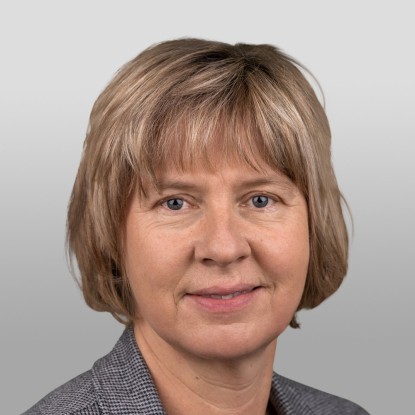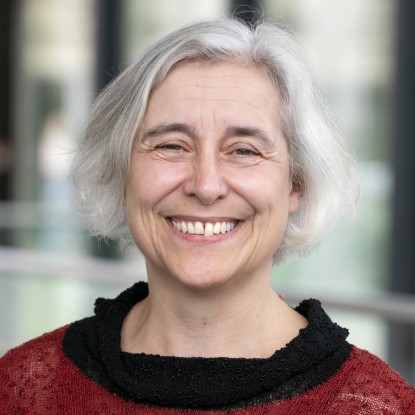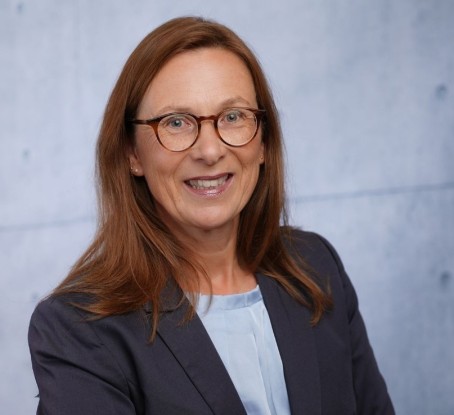Wednesday, October 26, 2021, 15:00 – 16:00, Zoom
Speaker:Jan H. Bruinier (TU Darmstadt)
Abstract:The geometric volume of a unitary Shimura variety can be defined as the self-intersection number of the Hodge line bundle on it. It represents an important invariant, which can be explicitly computed in terms of special values of Dirichlet L-functions. Analogously, the arithmetic volume is defined as the arithmetic self-intersection number of the Hodge bundle, equipped with the Petersson metric, on an integral model of the unitary Shimura variety. We show that such arithmetic volumes can be expressed in terms of logarithmic derivatives of Dirichlet L-functions. This is joint work with Ben Howard.
Wednesday, November 2, 2021, 15:00 – 16:00, Zoom
Speaker:Nils Matthes (Copenhagen)
Abstract:Meromorphic modular forms are generalizations of modular forms which are allowed to have poles. Part of the motivation for their study comes from recent work of Li-Neururer, Pasol-Zudilin, and others, which shows that integrals of certain meromorphic modular forms have integer Fourier coefficients -- an arithmetic phenomenon which does not seem to exist for holomorphic modular forms. In this talk we will study iterated integrals of meromorphic modular forms and describe some general algebraic independence results, generalizing results of Pasol-Zudilin. If time permits we will also mention an algebraic geometric interpretation of meromorphic modular forms which generalizes the classical fact that modular forms are sections of certain line bundles, and describe the occurrence of iterated integrals of meromorphic modular forms in computations of Feynman integrals in quantum field theory.
Wednesday, November 9, 2021, 15:00 – 16:00, Zoom
Speaker:Lindsay Dever (Bryn Mawr)
Abstract:The study of hyperbolic 3-manifolds draws deep connections between number theory, geometry, topology, and quantum mechanics. Specifically, the closed geodesics on a manifold are intrinsically related to the eigenvalues of Maass forms via the Selberg trace formula and are parametrized by their length and holonomy, which describes the angle of rotation by parallel transport along the geodesic. The trace formula for spherical Maass forms can be used to prove the Prime Geodesic Theorem, which provides an asymptotic count of geodesics up to a certain length. I will present an asymptotic count of geodesics (obtained via the non-spherical trace formula) by length and holonomy in prescribed intervals which are allowed to shrink independently. This count implies effective equidistribution of holonomy and substantially sharpens the result of Sarnak and Wakayama in the context of compact hyperbolic 3-manifolds. I will then discuss new results regarding biases in the finer distribution of holonomy.
Wednesday, November 16, 2021, 15:00 – 16:00, Zoom
Speaker:Paul Kiefer (TU Darmstadt)
Abstract:We will study (non-)holomorphic orthogonal Eisenstein series using Borcherds' additive theta lift. It turns out that the lifts of vector-valued non-holomorphic Eisenstein series with respect to the Weil representation of an even lattice are linear combinations of non-holomorphic orthogonal Eisenstein series. This yields their meromorphic continuation and functional equation. Moreover we will determine the image of this construction. Afterwards we evaluate the non-holomorphic orthogonal Eisenstein series at certain special values to obtain holomorphic orthogonal Eisenstein series and determine all holomorphic orthogonal modular forms that can be obtained in this way.
Wednesday, November 23, 2021, 15:00 – 16:00, Zoom
Speaker:William Chen (IAS)
Abstract:A Hurwitz space is a moduli space of coverings of algebraic varieties. After fixing certain topological invariants, it is a classical problem to classify the connected components of the resulting moduli space. For example, the connectivity of the space of coverings of the projective line with simple branching and fixed degree led to the first proof of the irreducibility of M_g. In this talk I will explain a similar connectedness result, this time in the context of SL(2,p)-covers of elliptic curves, only branched above the origin. The connectedness result comes from combining asymptotic results of Bourgain, Gamburd, and Sarnak with a new combinatorial 'rigidity' coming from algebraic geometry. This rigidity result can also be viewed as a divisibility theorem on the cardinalities of Nielsen equivalence classes of generating pairs of finite groups. The connectedness is a key piece of information that unlocks a number of applications, including a conjecture of Bourgain, Gamburd and Sarnak on a strong approximation property of the Markoff equation x2+y2+z2-xyz = 0, a noncongruence analog of Rademacher's conjecture of the genus of modular curves, tamely ramified 3-point covers in characteristic p, and counting flat geodesics on a certain family of congruence modular curves.
Wednesday, November 30, 2021, 15:00 – 16:00, Zoom
Speaker:Riccardo Zuffetti (GU Frankfurt)
Abstract:In the literature, there are several results on cones generated by (effective, ample, nef…) divisors on (quasi-)projective varieties. However, a little is known on cones generated by cycles of codimension greater than one. Let X be an orthogonal Shimura variety. In this talk, we consider the cone $C_X$ generated by rational classes of codimension two special cycles of X. We illustrate how to prove properties of $C_X$ by means of Fourier coefficients of Siegel modular forms
Wednesday, December 07, 2021, 15:00 – 16:00, Zoom
Speaker:Manami Roy (Fordham)
Abstract:Many mathematicians have studied dimension and codimension formulas for the spaces of Siegel cusp forms of degree 2. The dimensions of the spaces of Siegel cusp forms of non-squarefree levels are mostly now available in the literature. This talk will present new dimension formulas of Siegel cusp forms of degree 2, weight k, and level 4 for three congruence subgroups. One of these dimension formulas is obtained using the Satake compactification. However, our primary method relies on counting a particular set of cuspidal automorphic representations of GSp(4) and exploring its connection to dimensions of spaces of Siegel cusp forms of degree 2. This work is joint with Ralf Schmidt and Shaoyun Yi.
Wednesday, December 14, 2021, 15:00 – 16:00, Zoom
Speaker:Patrick Bieker (TU Darmstadt)
Abstract:We construct modular units for certain orthogonal groups in signature (2, 2) using Borcherds products. As an input to the construction we show that the space of invariants for the Weil representation for discriminant groups which contain self-dual isotropic subgroups is spanned by the characteristic functions of the self-dual isotropic subgroups. This allows us to determine all modular units arising as Borcherds products in examples.
Wednesday, January 11, 2022, 15:00 – 16:00, Zoom
Speaker: Luis Garcia (UCL)
Abstract: There are several recent constructions by many authors of Eisenstein cocycles of arithmetic groups. I will discuss a point of view on these constructions using equivariant cohomology and equivariant differential forms. The resulting objects behave like theta kernels relating the homology of arithmetic groups to algebraic objects. As an application, I will explain the proof of some conjectures of Sczech and Colmez on critical values of Hecke L-functions. The talk is based on joint work with Nicolas Bergeron and Pierre Charollois.
Wednesday, January 18, 2022, 16:00 – 17:00, Zoom
Speaker: Isabella Negrini (McGill)
Abstract: In their paper Singular moduli for real quadratic fields: a rigid analytic approach, Darmon and Vonk introduced rigid meromorphic cocycles, i.e. elements of H1(SL2(Z[1/p]),M×) where M× is the multiplicative group of rigid meromorphic functions on the p-adic upper-half plane. Their values at RM points belong to narrow ring class fields of real quadratic fiends and behave analogously to CM values of modular functions on SL2(Z)∖H. In this talk I will present some progress towards developing a Shimura-Shintani correspondence in this setting.




